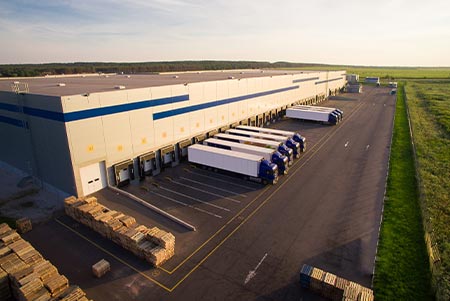

For more than 160 years, a multinational FMCG corporation has developed and marketed innovative consumer goods. Today, its portfolio of 22 billion-dollar brands and market capitalization of nearly $200 billion has made it one of the world’s most valuable companies.
Like their competitors, the company sees their presence in markets such as South East Asia as an important contributor to the company’s goal of consistent and continued growth. But the opportunities the market offers came with a profound challenge – with the product portfolio presented in outlets across the country, the company followed a network design and inventory policy that could not support current demand and was not efficient enough. This, in turn, could lead to negative financial implications and, in the perspective, have an adverse effect on all regional operations.
 The company wanted to review its logistics network and inventory policies and perform supply chain optimization. Seeing opportunities in digital distribution network optimization, they tasked consultants from the SupChainEra company with network design and auditing. The advisors from SupChainEra would create a computer model of the existing network and test business assumptions in a risk-free environment to create a plan for implementation of best-performing strategies in real life.
The company wanted to review its logistics network and inventory policies and perform supply chain optimization. Seeing opportunities in digital distribution network optimization, they tasked consultants from the SupChainEra company with network design and auditing. The advisors from SupChainEra would create a computer model of the existing network and test business assumptions in a risk-free environment to create a plan for implementation of best-performing strategies in real life.
SupChainEra’s consulting team chose anyLogistix supply chain design software to bring their network optimization models to life. In addition to the dynamic simulation capabilities that would allow them to measure every part of a supply chain’s performance, the software’s powerful experiments would reduce the time it took to design and test new policies.
The baseline model took advantage of anyLogistix’s support for detailed, large-scale network simulations. All told, it accounted for 60,000 sites within the modeled region of South East Asia where the company purchases, manufactures and markets goods. anyLogistix naturally fits for creating large-scale network models, and the consultants benefited from this opportunity.
In the baseline model, goods could be transported from company's factories to its distribution centers (1st leg, fixed delivery cost), between distribution centers, and from distribution centers to end customers (2nd leg, distance-based costs). To make the baseline network design more efficient, the consultants applied supply chain network optimization capabilities, available with anyLogistix software. Tracking metrics included:
When looking at shipment costs, it turned out that they were much higher when transporting goods between DCs. The consultants analyzed the model output statistics and proposed converting two of the most heavily used DCs into logistics hubs. This way, instead of being shipped from one DC directly to the other, goods would be collected in the hubs and then transported to other DCs. This would entail lower costs and more efficient supply chain network operations.
Click image to enlarge
Using anyLogistix capabilities, the consultants were able to map out and test the optimized supply chain network structure, including direct and indirect routes between DCs. It was calculated that the corporation would save 20% of the total transportation costs if implementing the developed network structure.
The next step for the company in supply chain processes optimization was shifting to MRP strategy. This strategy would allow the company to keep the service level high when shipping goods through the supply chain. To plan the strategy, the SupChainEra consultants applied the known demand of end customers and calculated demand forecast for DCs using machine learning algorithms. The results were later used as inputs in MRP policy settings in the baseline model. This resulted in an average inventory level decrease, but also affected the service level at some distribution centers. In particular, two island-based distribution centers experienced a service level dropdown from 98% to 94%, which was not acceptable. To normalize this metric, consultants applied the anyLogistix safety stock optimization approach, which resulted in a balanced service level and a 40% inventory level reduction.
With the software’s supply chain design capabilities, we were able to design a large-scale supply chain digital copy and visualize 60,000 sites on the map. anyLogistix was the only tool that allowed us to simulate such a detailed network, and its powerful experiments furthered supply chain optimization process. Support team was extremely professional, from both technical and communication perspective.
Finally, the consultants incorporated the designed MRP strategy into the optimized network, ran the simulation, and compared the metrics with the baseline model.
The final network design and policies, compared to the baseline design, showed better performance in terms of service level and cost saving. Average inventory level dropped 35% and total costs decreased by 20%. The designed structure was proposed to the executives, received positive feedback, and was advised for implementation.